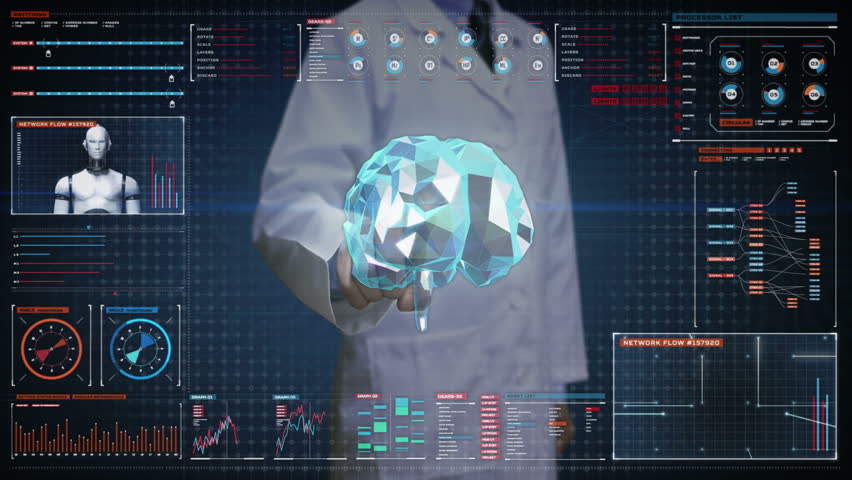A Look into today's devices and methodologies!
Advances in neuroscience are changing the way that some companies position their products, giving birth to the new field of Neuromarketing, a field of marketing research that studies consumers’ sensorimotor, cognitive, and affective responses to marketing stimuli.
Instead of looking to what happens in the mall, Neuromarketing tends to look at what happens deep into the consumer brain. And in order for a Neuromarketer to succeed, they have to get as close as they can to what is happening in the brain and this can be achieved by using technology that physiologist and scientist use to measure directly how the person feels and react about a certain add, product or display.
Separating Science from Fiction
In 2002 Clinton Kilts of Atlanta’s Emory University called in a team of volunteers for a series of experiments to throw light on the brain’s role in product preferences. How does activity in brain cells mirror things we are crazy about as opposed to things we absolutely hate or that just don’t speak to us? At that point, Kilts had nothing to do with marketing or advertising in general, but the fundamental question tickled his fancy. (Chemical rewards of cooperation, C Kilts, Emory University, Brain in the News, 2002).
Not long after his breakthrough, Clinton Kilts helped to found a new division for the American marketing consultancy BrightHouse, their Neurostrategies Group. It was claimed in their launch statements that all the studies done would be of a general character–designed to increase our understanding of how consumers think and, in particular, how they develop a relationship to companies and brands.
In 2007 Lee, Broderick & Chamberlain created techniques and methods that were used in marketing to understand consumer behavior in relation to markets and commercial trade. Among these techniques were protocols for the measurement of marketing stimuli using neuroimaging techniques, which make an image of the patient’s brain using non-invasive means.
Even before the technique received the prefix “Neuro”, some companies already used neurophysiologic techniques, such as electroencephalography (EEG), to solve marketing problems (Fisher et al., 2010).
However the scope of Neuromarketing techniques must include all the areas of physiological and cognitive processes, among those areas are some physiological aspects such as perspiration, electrical conductivity of the skin, hormonal and neurotransmitter changes, movement and dilation of the pupil, and movements of muscles (body and face).
Techniques
Electroencephalography (EEG): in this technique, electrodes that measure the brain waves associated with different states of stimuli are placed on an individual’s scalp through bands or helmets, and these waves can be measured at small intervals up to 10,000 times per second (Morin, 2011).
Eye tracking: increasingly used along with other techniques such as EEG and fMRI. Advantageous, this method enables to us measure the focus of consumers’ attention, the pattern of visual behaviour of fixations of the gaze, dilation of the pupils, focus, and microfocus; in addition, the equipment is portable.
Galvanic skin response: this technique measures the objective excitation caused by an emotionally relevant stimulus.
Facial recognition (or electromyography): a technique still not largely used in neuromarketing that consists of measuring facial muscle movements that are imperceptible to the human eye through electrodes placed on the muscles of the mouth (zygomaticus minor and major) and on the occipitofrontal and orbicularis muscles to check the type of emotion (happiness, sadness, indifference, pain, etc.) (Melillo, 2006)
The experiment however runs for several days on different participants where subjective data is collected in the form of questionnaire and behavioral data is collected with wearable technologies. A typical experiment for Neuromarketing would involve cameras mounted on glasses or on a screen to monitor facial expressions, eye movements and pupil dilatation, GSR finger mounted devices, and EEG non-invasive device mounted on the subject head and in contact with the scalp.
The most important factors are the quality and viability of the device and the quality of data collected. An error rate of less than 8% can be tolerable since the mix of all metrics together can help the researcher identify any problem or artifact with the data collection and provide better information for evaluation.
An essential factor especially for EEG devices is the number of sensors. The typical medical EEG uses 19 electrodes, meaning 19 channels of information being read from the scalp. In some cases, very high densities of 250 electrodes or more are employed. More sensors translate into greater brainwave information and more “thought resolution” can be achieved; headsets that use just one or two electrodes for example, cannot be expected to give the “thought resolution” that 19 sensors can provide.
When using single channel EEG devices, a neuroscientist can only detect small localized changes in the human brain and in order to get a bigger picture and interpret the activity better, one should increase the number of channels to get a bigger distribution and make sure to get good quality signals.
Another important factor in measurement of EEG brainwaves is the electrode type; traditional devices use gel, paste or saline at the scalp terminals to ensure conductivity of the electrodes onto the scalp. The new headset relies instead on natural skin-oils and sweat to create a sufficient connection and have similar performances to wet-based systems.
With dry technology and a Bluetooth enabled headset, new devices boasts the convenience of EEG testing for market research environments beyond the lab. That is, devices can now be used in consumer’s homes, at movie theaters, in shopping malls as well as at outdoor venues. The technology nowadays enables consumer EEG data to be streamed via Bluetooth to any portable smart device, such as an iPad or iPhone.
Future of Neuromarketing
In order to evaluate and to set guidelines for Neuromarketing studies, the Advertising Research Foundation (ARF) gathered a number of TV commercials and asked the various neuromarketing suppliers to apply their technology for testing the same commercials; a presentation of the first-phase of this extensive study findings from March 2011 is available through this link.
As I always say, EEG to brain activity is like a mirror to physical traits, and how is someone to use a plastic mirror to get a complete look about his whole.




